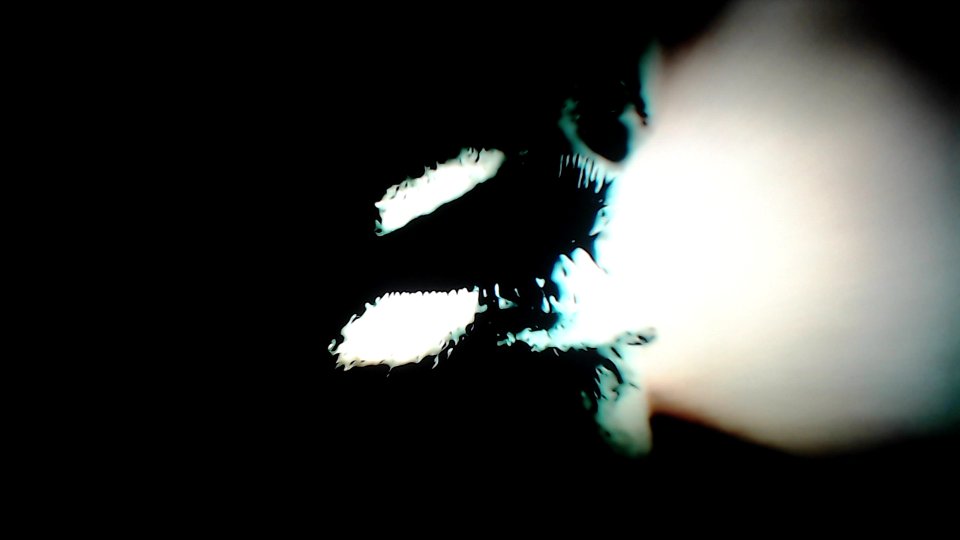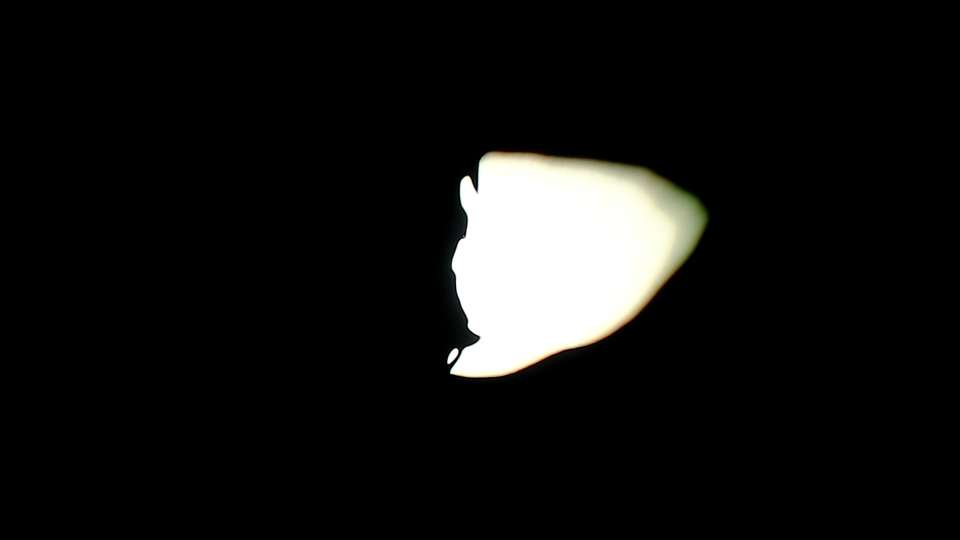Digital degradation as concept and creation technique
A philosophical and artistic reference by 220Degradation is a property of nature and materiality
Every entity is brought to materiality through a combination of particles, chemistry and energy, grows up and eventually dies. Though there are entities that live a long lasting existence (like some rocks), every biological entity has a life that copes with this circle. As such, we could consider entropy a quality of materiality, and not necessarily as means for physics to explain the loss of heat, but rather to explain the degradation of every material entity in existence.
Even digital domains are prone to entropy, provoked either by physical degradation of the equipment used to hold information like power supplies, cables and hard disk units, or by the loss of information generated by a misbehaving operating system.
Now, when we talk about the use of technology to communicate with other living humans, degradation becomes the process of misunderstanding the message itself, the intention and even it’s form. Our human brains hold a series of components that help us understanding other human beings through the subtle interpretation of body language and histrionics, but most popular social networks are text based, giving every user the chance to miss this key elements to communication.
These conceptually faulty social systems are only the beginning of a new Babel tower, in which everyone holds a communication device, but no one actually comprehends the information that is being given through it, as this is not a translation problem, but a comprehension and degradation one.
Stop and think about Nietzsche’s famous “God is dead” quote. Those who have studied it’s philosophy will probably understand that this talks about social systems, morality and state, but those who haven’t usually take the phrase and assign it a meaningful place in their nous or knowledge set, understanding it inside the audience context; that way, atheists will rejoice in the idea of a dead god.
Let’s imagine that quote inside a meme that gets shared on facebook; with every repost, the message loses it’s original meaning, as every user who does so assigns it’s own comprehension set and explanation of their own to the meme, thus degrading Mr. Frederick’s original intention of his writings.
Somehow we have been tricked into thinking that social networks are the optimal way of staying communicated with your friends and family, and an excellent way of distributing knowledge, but alas, this is not true, not only because of the before mentioned factors, but also because degradation is a part of information, as well.
Even if information is not strictly physical at all, it uses physical means, just as a digital domain also requires materiality to convey itself. In the case of information, it first depends on a human brain, either the person who got the data, or the one who created it. From the moment the data is perceived to the moment it is actually recorded somewhere, there’s a memory factor that can fail, and before that there’s the perception factor that determines if someone gets partial information, and gets it right or wrong.
In every case, materiality is a quality that is also applied to information and communication, as it doesn’t matter if the channel it’s using for distribution is digital, human (word of mouth) or material; as it’s material, it’s also subject to entropy, and thus degradation.
Until we manage to understand this as an important factor among digital communications, we won’t be able to really communicate at all at a deeper level.
Us human beings are in need to strengthen our relationships through solid material encounters, or learn to understand data under it’s real context through deep information. If we don’t do that, we’re condemned to hating each other not due to ideological or racial differences, but rather to cultural ones, particularly the way we talk to each other.
How much comprehension of the real world do we miss if we only appreciate it through a digital window?
Ego Interitus is a signal redundancy creation exercise which use degradation both as a central theme and as an actual production technique. Conceptually, it focuses around how humanity gets degraded through the misunderstanding of replicated and redundant digital discourses, creating individual meta.realities mostly based on beliefs, rather than knowledge.
The following text (in Spanish) explains the concept behind (hopefully) very clearly:
El uso desmesurado de la tecnología digital actual como medio convencional de comunicación provoca una degradación perceptual de los sucesos conforme los mensajes son replicados. Si nuestra percepción biológica es sumamente limitada, ¿qué podemos esperar de los nuevos canales que son per se una deformación de la realidad?
Pensemos por un segundo en la cámara fotográfica, misma que transforma la percepción de los volúmenes para lograr proyectar una imagen de tres dimensiones en un plano de bidimensional. El cambio en la perspectiva tanto del lente como de las pantallas que las reproducen generan una deformación en la imagen que la aleja de los hechos.
Hemos normalizado dicha deformación perceptual, a tal grado que incluso nos resulta más atractivo apreciar una imagen en alta definición, que verla en definción real, es decir, en persona, en el lugar de los hechos y en directo, con más sentidos involucrados que tan solo la vista, y posiblemente el oído.
Consumimos imágenes de manera voraz, y lo único que logramos obtener es una metarealidad de los sucesos de los que creemos estar enterados. Los procesos digitales aceleran la creación de universos falsos, y nuestra necesidad por contar con información en el acto no permiten que profundicemos en el conocimiento y los actos que realizamos.
La construcción de una metarealidad, basada en la muy sesgada apreciación perceptual de los hechos, nos limita a la aceptación de conocimiento falso o incompleto simplemente por su disponibilidad inmediata; al final, esto nos degrada como personas y seres racionales, por ende provocando el declive de la sociedad basado en mentiras y manipulación de la verdad.
Ego Interitus critica la degradación del ser humano a través de la replicación digital de discursos redundantes utilizando herramientas digitales como el video o el internet, y aprovecha la oportunidad para explotar la degradación como medio de creación digital.

B

C

D
Titles: B, C, D
Author: 220 (ec.)
Year: 2018
Technique: Digital image degradation
Materials: Camera, Screen, Linux box, Java
Official site: ego interitus
Actually, this technique's whole name would be "Digital image degradation by redundant feedback looping a visual signal to a closed video system", or in short "Visual redundancy feedback".
The practical idea was to take a picture, then feed that through a perfectly aligned camera-screen feedback loop through a custom Java app that ran on a Linux box. The software took the image from the camera and then displayed it back justo to be captured by the camera again for a total of 32 cycles.
As the image gets shown on the screen and recaptured by the camera, it slowly gets degraded because of technology limits. While modern cameras and screens have excellent resolutions and color management, they are not actually capturing a material reality, but rather a technological meta.reality created by the relation between these two devices, the information they’re initially given and their technical limits.
Step by step, the images got totally degraded, without giving any trace of what it actually was at the initial condition. This, as a metaphor, reflects what actually happens when you repost an out of context message to an audience which assigns their own reality to it and posts it back. At the end, even if it ‘s the same image, the message gets horribly lost behind an act of both digital and conceptual degradation.
Ego Interitus (Ego interrupted) – at the end – is also an exercise on how to use digital degradation in order to create new and beautiful results if managed as a creation technique. The results are mesmerizing and esthetically pleasant, and even if they require lot of time on calibration, the actual process is really, really fast, thanks to the custom software and tight process pipeline.
